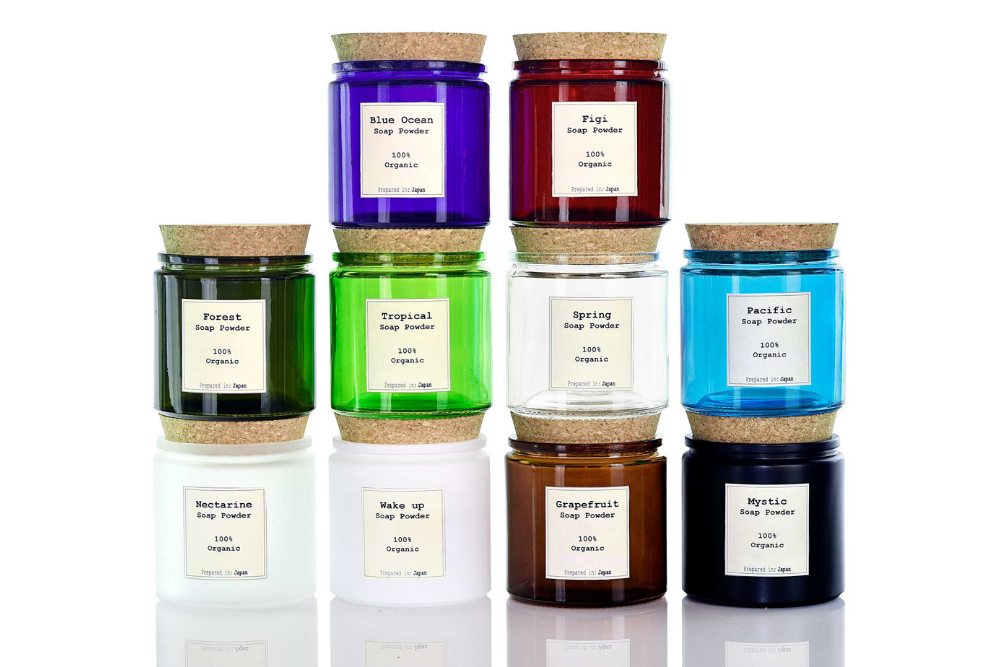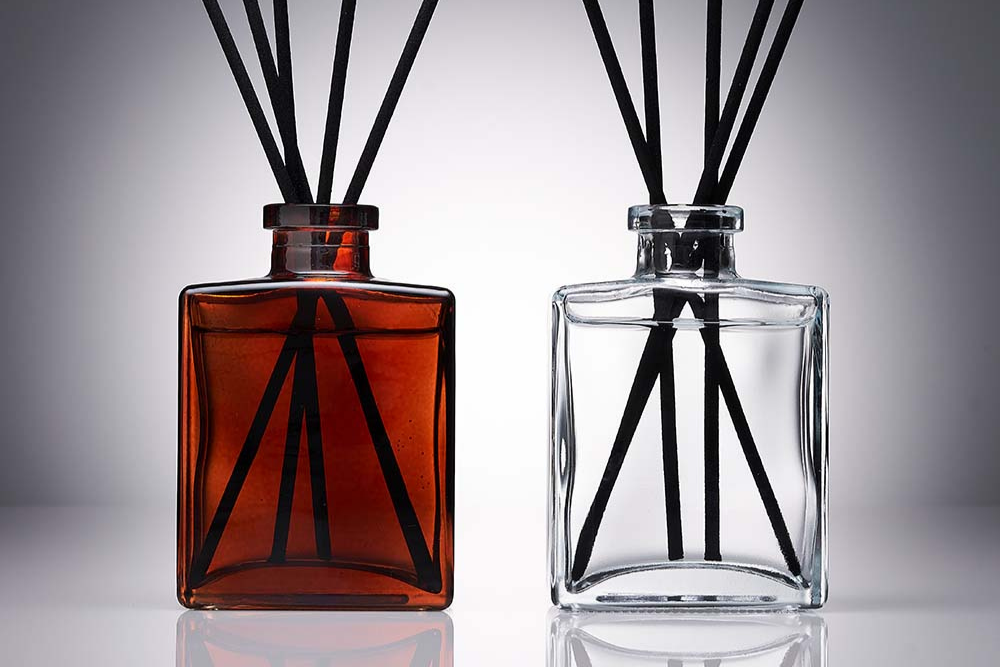Glass packaging is a premium option within many industries, and for brands, choosing the right color is key to success. Although transparent packaging suits many brands and industries, colored glass packaging excels at catching customers’ attention. Keep reading as we explore how customers respond to glass packaging of different colors.
How Colored Glass Packaging Influences Consumers

The color of glass packaging has a significant impact on consumers’ impression of the product. Different colors evoke certain emotions or associations, making certain audiences more likely to purchase a product.
Listed here are customers’ general associations with packaging colors:
- Blue: Depending on the shade, blue evokes feelings of trust, serenity, or excitement. It is a good choice for products that are calming or refreshing. Light blue or aqua-tinted glass bottles are also used for products like fragrances, skincare, and cosmetics.
- Red: A bold and attention-grabbing color, red is associated with energy, passion, and danger. Red glass packaging is especially fitting for hot sauces, condiments, and pepper extracts.
- Black: Black glass packaging evokes feelings of sophistication, elegance, and mystery. Brands often use black glass to package high-end products such as perfumes, colognes, and gourmet oils.
- White: White glass packaging conveys purity, simplicity, and cleanliness. It is often used for cosmetic products, such as skincare or haircare products, that emphasize natural ingredients or gentle formulas. Many olive oil and vinegar businesses also choose white glass bottles.
- Purple: Often associated with luxury or creativity, purple is a good choice for high-end or artistic products.
- Yellow: Yellow glass packaging evokes feelings of warmth, energy, and happiness. This packaging color is a good option for products that are themed around citrus, honey, or exotic spices.
- Green: Often associated with nature, health, and relaxation, green is a popular choice for products that promote wellness or eco-friendliness. The color also conveys a sense of freshness, making it a great choice for products like juices, teas, and natural supplements.
- Orange: Orange glass packaging conveys a sense of warmth, creativity, and playfulness. It can be a good choice for products that are associated with autumn or harvest seasons, such as pumpkin spice blends, cider, or specialty beers.
Color associations vary depending on the target audience and product type, but understanding color psychology is key. As you learn more about how your target audience interprets color, your business will make more informed packaging decisions for its products.
Colored Glass Packaging vs. Transparent

While colored glass packaging is a popular choice, transparent glass packaging also has its benefits. For one, it allows customers to see the product inside, which can be especially important in the beauty and perfume industries.
In some industries, colored glass packaging is particularly effective. In the candle industry, colored glass contributes to the product’s aesthetic. As customers enjoy their candles in-home, the packaging color becomes part of the cozy atmosphere.
Colored Class Packaging for Light-Sensitive Products
Many industry standards demand dark-colored glass packaging for light-sensitive products. For example, essential oil businesses often package their products in amber or cobalt blue glass bottles since light is seriously damaging to the oils. Other light-sensitive products that are commonly packaged in dark-colored glass include medications and perfume.
Incorporate Brand Colors into your Packaging Design
Many brands choose to use glass packaging that differs from one of their brand colors. However, it’s always important to incorporate brand colors somewhere into the packaging design — and visibly. This helps customers recognize the product as part of your brand, and as you release more products, a cohesive brand identity will form.
As you plan the color of your next product’s glass packaging, make sure to consider how and where you’ll include your brand colors. If the packaging material is different from your brand colors, consider including your branding in the product label and closure.
Custom Packaging Colors
If the glass packaging you’ve explored hasn’t been quite the right color, look no further. Glassnow offers wholesale glass packaging and will work with you to produce the perfect color. Custom-colored packaging is available in transparent, opaque, frosted, and mercury finishes.
For inquiries about Glassnow’s custom packaging colors, check out our color customization page to find all the answers alongside a contact form.
Conclusion
Colored glass packaging has a significant impact on consumers’ buying habits. Understanding the associations that different colors evoke allows businesses to make informed decisions about their packaging. However, transparent glass packaging also has its benefits, and it’s important to consider the specific needs of the product and target audience when choosing a packaging design.
For more ways to captivate customers with your brand’s packaging, read Glassnow’s list of trending packaging design styles in 2023.

